Winter Sowing Seeds, Your Easy Guide to Success
Winter Sowing Seeds for a Beautiful Season of Flowers.
When you winter sow your seeds you get a head start on blooms and beauty for the following summer! Plus it is a great way to get your garden fix during cold weather.
Winter Solstice has come and gone now it is time to winter sow seeds for masses of flowers you can easily transplant into your garden in Spring. (technically you can start before the end of December if your climate is cold enough)
This budget-friendly way of seed sowing gets you lots of flowers and earlier blooming from some of your favorite perennials, biennials, and annual flowers.
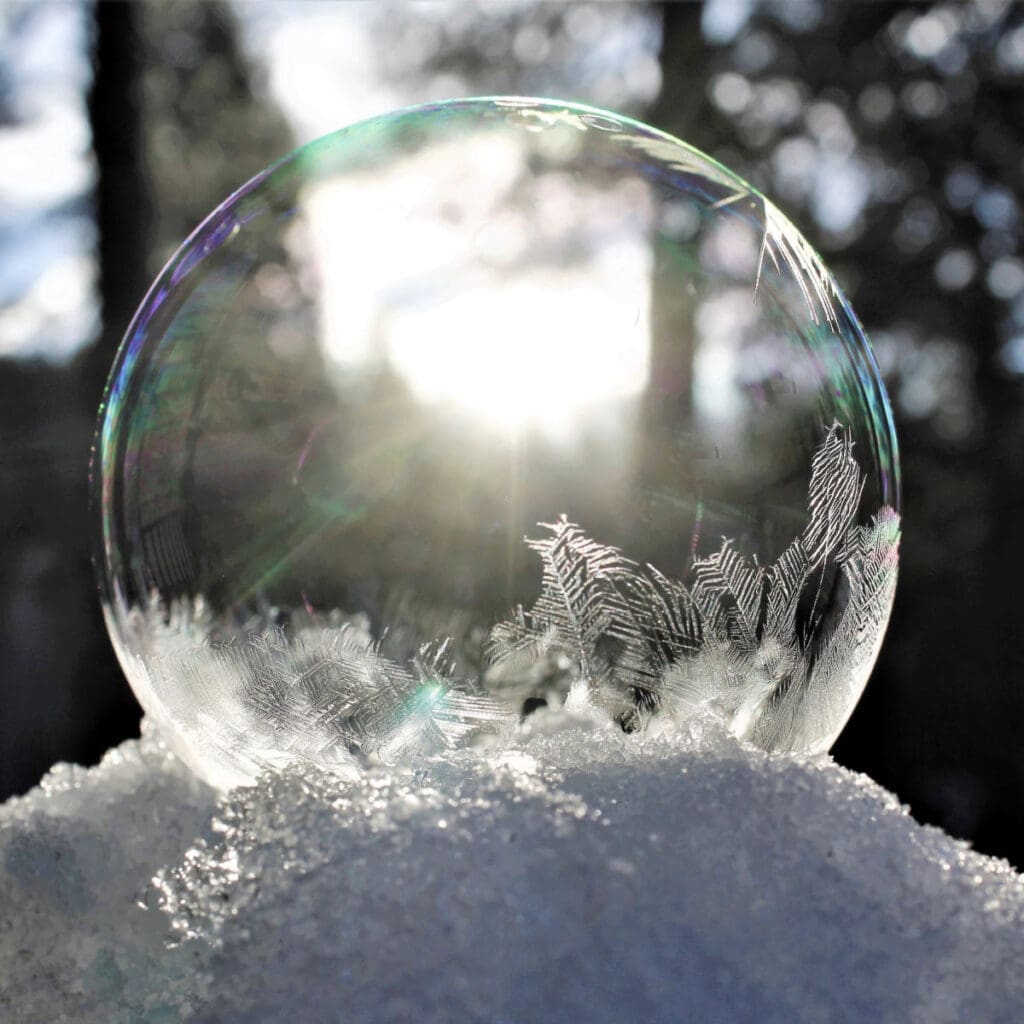
This post contains affiliate links, if you purchase something from a link I will make a small commission at no added cost to you. Thank you.
What is the Winter Sowing Method?
Winter sowing is a method of germinating seeds outdoors in recycled containers during the cold winter months. You don’t need special equipment or a greenhouse. The recycled containers act as miniature greenhouses so you can skip the grow lights and heat mats.
Planting seeds in winter is great for those who don’t have any extra space indoors to dedicate to seed starting. All you need is some good quality potting soil, containers, and seeds along with the great outdoors! (Cold winter temperatures are key for this)
You can garden inexpensively! Winter sowing is one method that has been proven to work and can be done from early to late winter in most areas. Keep it budget friendly use cheap seeds from the dollar store.
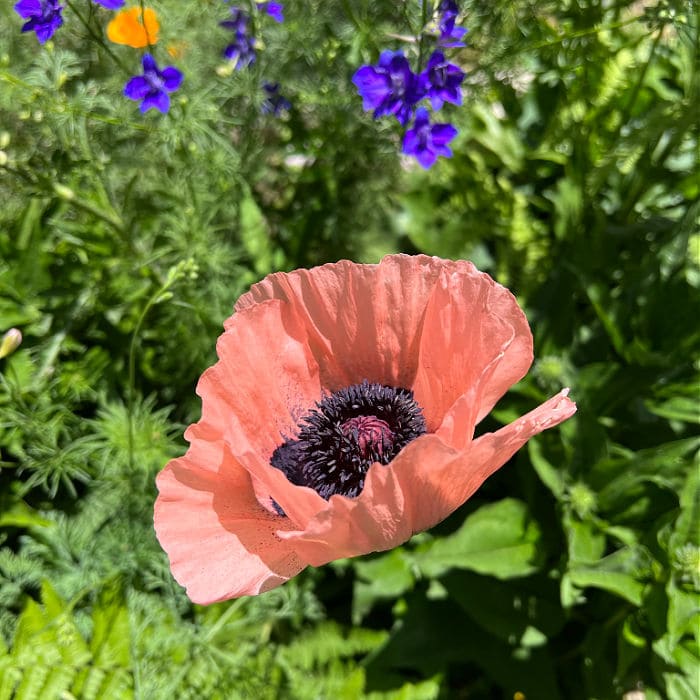
Winter Sowing in Milk Jugs – Why?
This is one of the most common containers for winter sowing. One-gallon milk jugs make perfect mini greenhouses and are one of the best ways to do it for many reasons.
- You can get a good depth of soil so the seedling’s roots have room to grow.
- Height, you can grow some of the taller plants that need those few extra inches to stretch up.
- Most milk jugs are translucent, not transparent which is beneficial during the warmer sunny days in Spring.
Diffusing the sun when it is strong protects the tender seedlings from getting scorched.
how to grow
Gorgeous Delphiniums from Seed!
Add height and elegance to your garden with delphiniums. Easily grown from seed and they return year after year!
Why Winter Sow Your Seeds
Did you know many biennials don’t bloom until the second year? Unless you sow them early! Sowing seeds in winter helps you get that early start and a better chance of them blooming in the first year.
Have a tight budget? Grow a gorgeous flower garden from seeds! Not only will you get blooms from the perennials and biennials that take a bit of establishing but you will also have a great big head start on other plants.
In This Video I share All the Flowers in My Garden Grown from Seeds!
Press the photo to view them all.
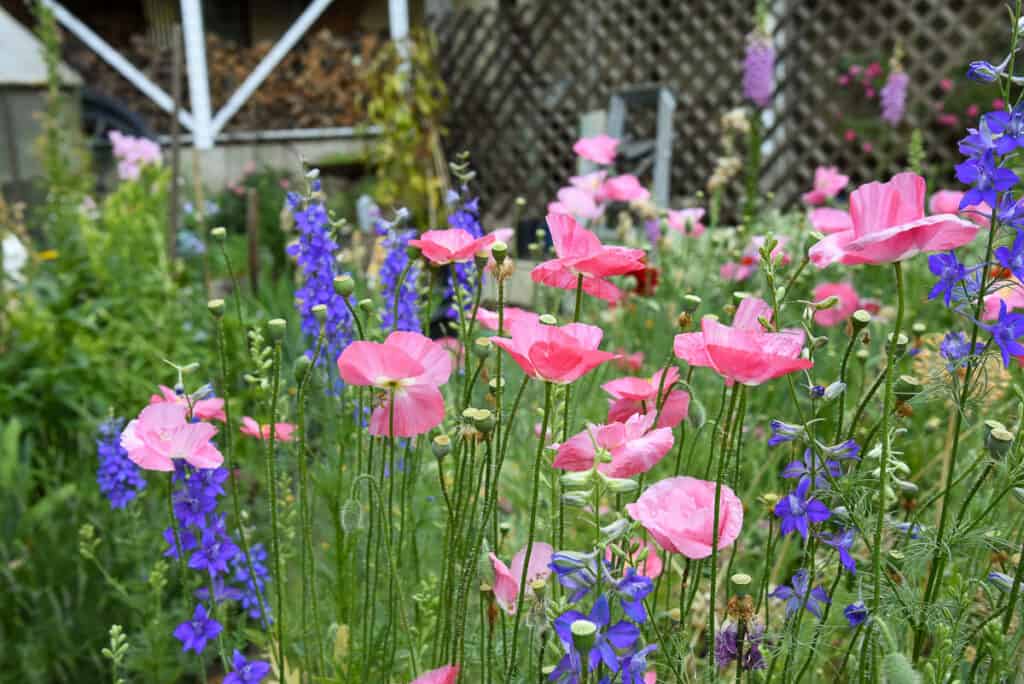
Plants grown from seed in winter are tougher than those started indoors. Healthier plants equal better success when transplanting!
Also, many seeds need cold stratification to germinate well and they get that cold spell with winter sowing. And to get good flowering many need vernalization.
Vernalization: the cooling of seed during germination to accelerate flowering when it is planted.
Stratification: In horticulture, stratification is a process of treating seeds to simulate natural conditions that the seeds must experience before germination can occur. Many seed species have an embryonic dormancy phase, and generally will not sprout until this dormancy is broken
Some seeds with hard coatings also do better with sowing them in winter as the warming and cooling, even some freezing temperatures help to soften the coat which makes it easier for the seeds to germinate.
Another plus is winter sown seeds don’t need to harden off before transplanting into the garden. Those are just a few of the benefits of winter sowing.
Best Seeds for Winter Sowing
As a general rule of thumb, if a perennial plant is hardy in your climate and growing conditions you can plant its seed in winter.
The seeds will sprout when warmth comes and if it sprouts then you are hit with a cold front the sprouts will survive.
Pay attention to the wording on seed packets like “self-sows”, “cold hardy”, “withstands frost”, “sow outdoors in early Spring”, “direct sow early”, and terms similar to that. Also, seed names with “wildflower” or “weed” in them. AKA: Milkweed
When Should You Start Winter Sowing
When to winter sow your seeds? The optimum timeframe to winter sow hardy perennials and hardy annuals is generally December to March depending on the temperatures and weather conditions in your area.
These types of plant seeds germinate in Spring best after they have had a consistent period of moist, cold temperatures. (see above on stratification and vernalization)
Don’t worry about your garden zone or a sowing calendar. This varies by area and yours won’t fit someone else’s. Your growing season is determined by your first and last frost date, NOT your zone!
I get asked about when someone can start winter sowing in a particular zone. Cold hardy annuals and perennials won’t sprout until the weather warms enough, they will just stay dormant.
Zoning is relative. Though I am in zone 8, there are plenty in zone 5 that get warmer springs earlier than I do. Read all about garden zones in the article I dedicated to that topic.
Winter Sowing Annuals and Perennial Plants
The photo below is a small example of cold hardy annuals and perennials in my area. Many feel winter sowing native perennials is the best way to grow them from seed.
These little frozen seedlings are Violas, Larkspur, and California poppies with a bit of Feverfew tossed in for good measure.
These self-seeded this past Fall and have sprouted. We had nearly 3 feet of snow around Thanksgiving, then enough rain to wash that away. Then we were hit with lows around 20 degrees F.
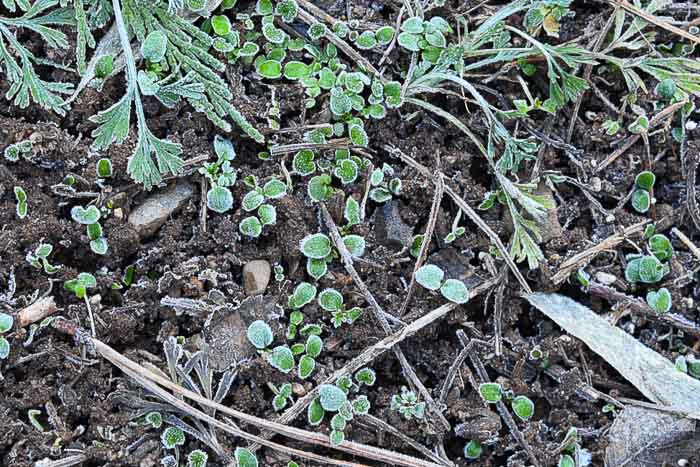
This past week (late December) we were in the low 50’s during the day and down to the low 30’s at night. The little sprouts have just hunkered down to wait for more warmth in Spring to continue. Despite the fickle weather, they have endured it all just fine.
Planting in Milk Jugs – Winter Sowing Containers
For an article on the best Winter Sowing containers, you can hop on over here! Further below in this post, I share other containers I use for winter sowing.
How to Winter Sow Seeds in Milk Jugs
Start with some recycled 1-gallon milk or water jugs.
Note for Success: you can use other-sized containers but I like the one-gallon as the bottom of the container is wide enough to make them stable and not topple over as easily as narrower ones
Wash and sanitize them with a bleach solution. Fill your kitchen sink with hot water and add about a 1/4 cup of bleach. (you can do this in any large tub that will hold water)
Let the jugs soak in the bleach solution for about half an hour. I also like to let some of the water partly fill a jug and then replace the lid, then shake water around in the jug. This helps if there is any residual debris (dried milk) still in the jug.
Pour out the water and let the jugs air dry.
Next hold the skewer, knife, or Philips screwdriver over a flame (I have a gas range in my kitchen) until it is good and hot then press it against the bottom of the milk jug until it pierces it.
Do it over and over until it is too cool then reheat it and do it again until there is plenty of drainage holes in each jug. (some use a soldering iron or hot glue gun to do this)
I have also used a Xacto or utility knife and made an X in the plastic bottom and twisted it to open it up a bit.
Next to the base of the jug handle, I place a slice horizontally, then using scissors cut all around leaving a 1 1/2-inch wide band beneath the handle to act as a hinge.
Some use a box cutter for this but I find scissors much easier and safer to use.
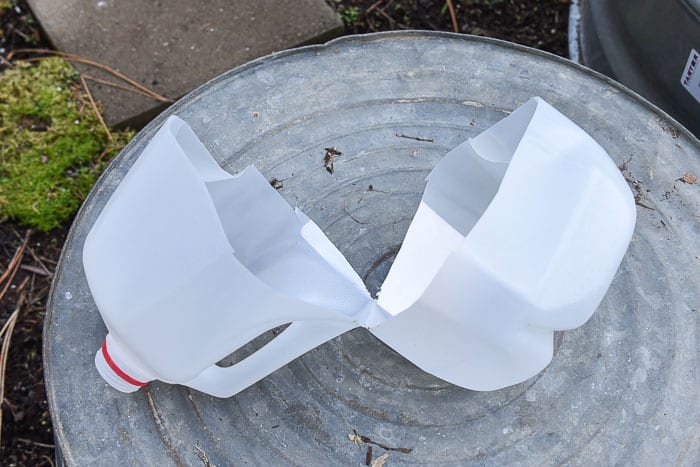
Add a few inches of potting soil to your container, more soil means more space for the roots of the plants. Sprinkle the seeds onto the surface of the soil and press them gently yet firmly into the soil. Good contact between the seeds and the soil is important.
Next top with a thin layer of soil, vermiculite, or horticultural sand. Be sure and read the seed packet, some seeds need light to germinate so opt to not to add any cover of soil on those.
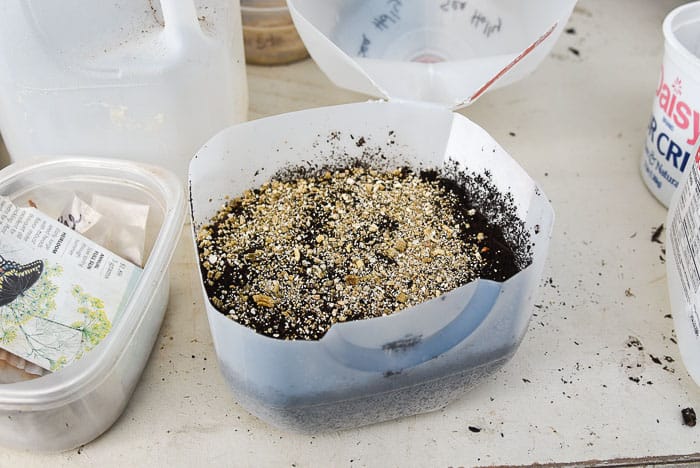
Vermiculite and or sand is supposed to retain moisture without crusting over.
How deep should seeds be with winter sowing?
Just as with any seed sowing, seeds differ as to how deep they should be planted. This information should be on the seed packet and you plant accordingly.
Some will say to use a seed starting mix but that is not necessary for this method as winter-sown seeds aren’t as susceptible to damping off and the fungus that plague indoor sprouts. If you are using good-quality potting soil you are fine.
Do not use potting soil with additives like water-absorbing crystals, synthetic fertilizer (aka Miracle Gro) and things like that. If I am not using my DIY potting mix I use EB Stones Ednas Best or Fox Farm Ocean forest Potting Mix.
With a paint pen, write the name of the plant that you have sown onto the container and the date (optional).
In the video linked below, I show how I add additional identification inside if this gets washed away in the weather.
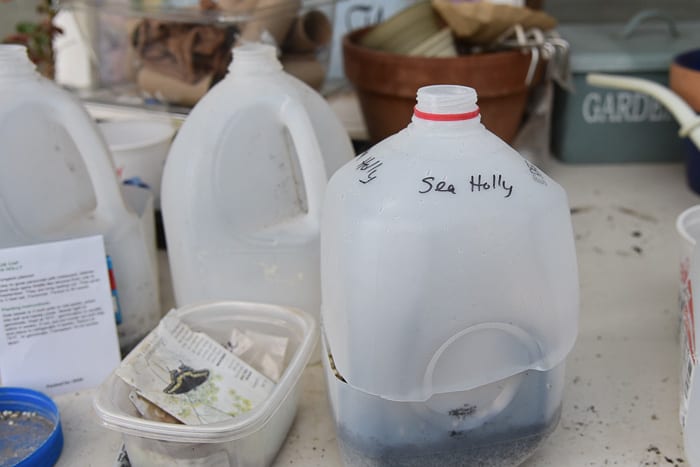
I use duct tape to close up the milk jug, others say they use packing tape but I haven’t found packing tape as durable. If the soil needs some water I will set it in a deep dish to soak some up. I add some Organic Rev to the water and that seems to help the germination and health of the seedlings.
(another gardener who winters sows sent me a note saying she writes the name of the plant on the duct tape too and that seems to hold up best for her)
Place Outdoors
Place the container outside in an area that is semi-protected so it won’t get blown or knocked over.
I seat the winter sowing containers into the soil of a raised bed to secure them a bit better if we get any strong wind. Pretty soon I will have this all filled with these jugs.
As you can see in the photo you DO NOT want to put the lids back on the jugs. The opening allows water and air to get in. Some will piece holes in the tops of the jugs but I have succeeded without that extra step.
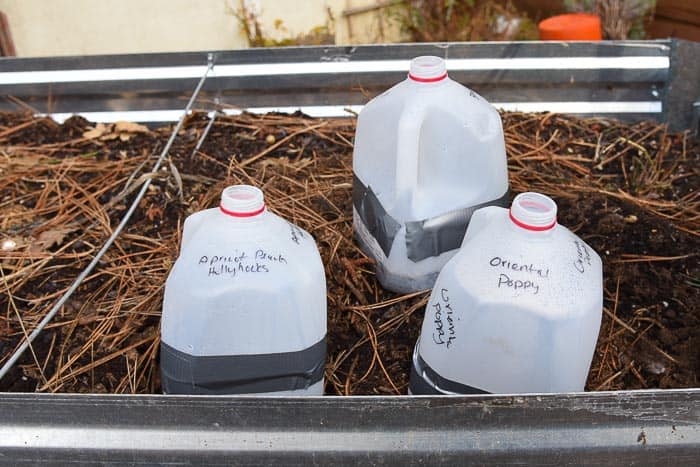
Though to most onlookers, this is not the most attractive thing to view, to me these milk jug greenhouses are gorgeous. Some will use milk crates to keep the jugs together and protected.
I know I will have tons of flowers to plant out this coming Spring for such a small price and that has got beautiful written all over it!
I used these raised beds for my vegetable garden all last summer and I loved them!
Other recycled containers you can winter sow in
I not only sow seeds in gallon jugs. Here are some other containers I have used.
I save different plastic containers that have separate lids already. I like the Organic Spring garden salad mix from Costco. (also available at many grocery stores)
I have also used these to start seeds in Spring, they work great for that too.
Once we have eaten up the salad I give the container a good wash in hot soapy water, dry then poke drainage holes in the bottom and a couple in the top with a hot skewer.
You want it to drain very well so make sure there are plenty of holes.
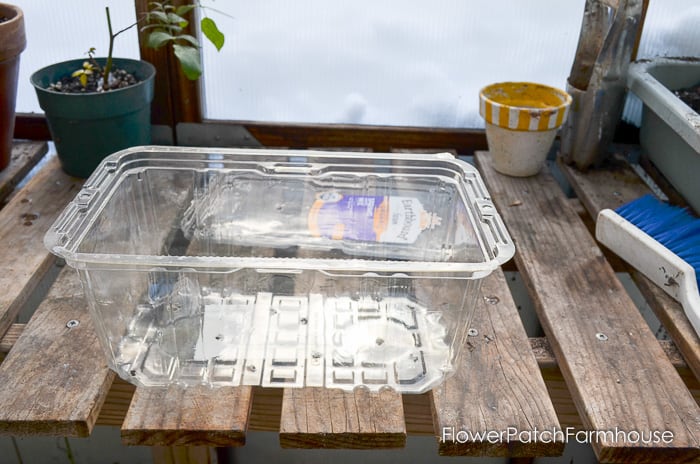
Must you use a specialty mix?
Seed Starting Mix vs Potting Soil
I did a test on whether using a specialty seed starting mix was superior to potting soil when starting seed. See how it turned out!
Or I use my DIY potting soil. I show you how I make it in this article.
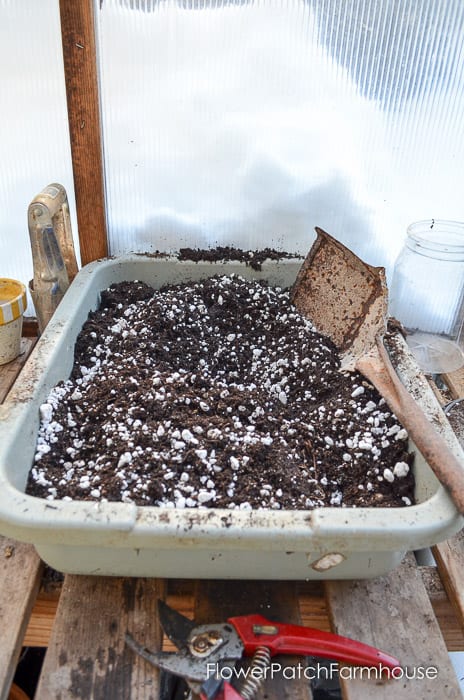
I don’t fill the clean salad container with the soil mix, I just use a few inches.
Water it well. This saves you from having to water after you have sown the seeds which can displace them if you are not very careful.
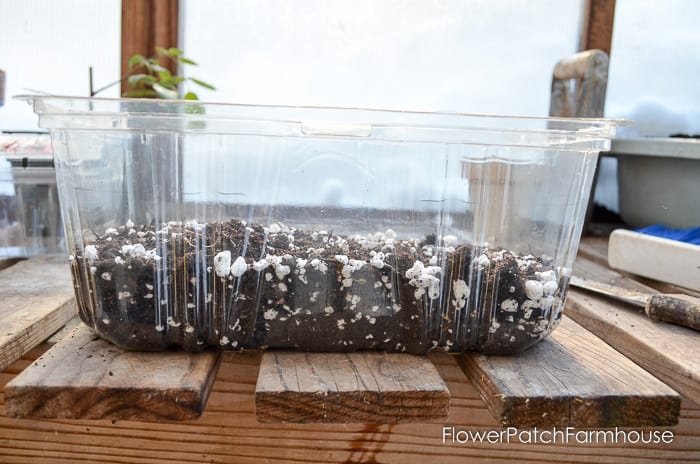
Many are listed in this post on cottage flowers that reseed themselves.
Once you have sown the seeds set the container into a tray of water and let it absorb from the bottom. You can carefully water from the top but it is so easy to bottom water and there is no danger of dislodging seeds.
You can put these containers outside in the winter weather like the milk jugs, just make sure to pierce holes in the top of the containers.
Sometimes I keep the salad containers in my greenhouse or on my back porch.
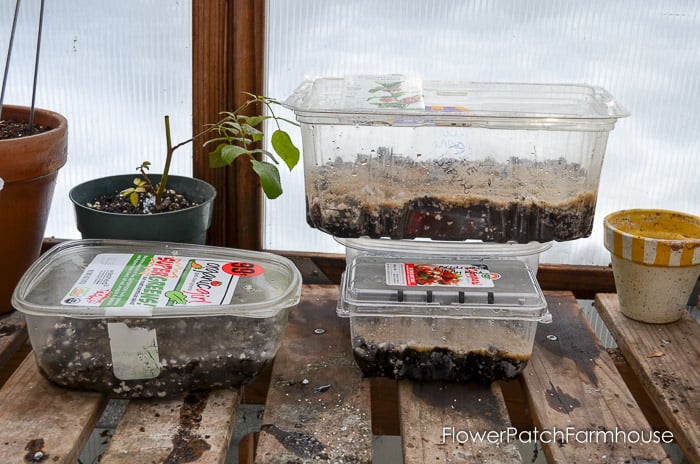
Before you know it you will have tons of seedlings ready to pot up or out into the garden. You should see seedlings in 6 to 8 weeks. (depending on conditions)
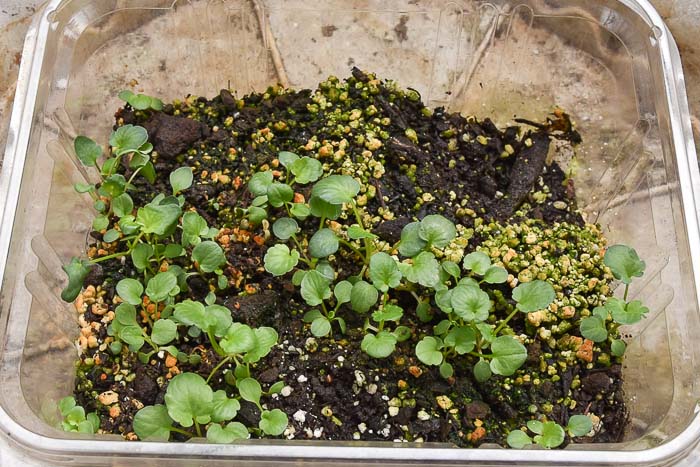
Maintenance of Winter sowing containers
Most of the winter you can just ignore them but after the weather begins to be sunnier you will want to check on them.
Check for condensation on the inside of the containers on any sunny day above 32 degrees F.
If you don’t see condensation you should give them some water by setting the container in water to absorb it through the bottom.
Check for sprouts. They are easily visible down the spout or through the sides of the clear containers. You may be surprised how soon some germinate even when it is still quite cold out.
As temperatures rise you will need to open the tops of the containers or they will overheat and cook your seedlings. Just be sure to close them back up at night.
Once the days are 65 or above you can opt to open and close them daily or you can set them in a location where they will get morning sun and afternoon shade. I have found this to be less work than opening in the morning and then closing again at night.
Once you are opening the containers you will need to stay on top of keeping them watered if you are not getting steady rain. With such a shallow amount of soil, they will tend to dry out fast.
Planting out Seedlings
Once the soil in your garden can be worked and your winter-sown seedlings have their true set of leaves you can plant them out. It is safer until they develop larger root systems and are nearly reaching the tops of the containers if planting directly into your garden. Smaller seedlings are more vulnerable.
If you want to pot some up to grow on in larger pots or give away visit here: Go here for how to thin seedlings.
In Spring I can start the seeds of the more tender annuals and perennials this way too.
Click here to see how I start seeds indoors!
Here is to tons of beautiful flowers in our future!
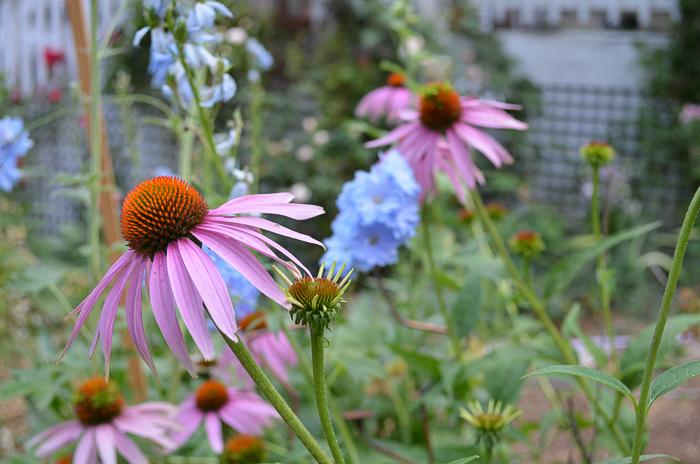
There are tons of methods for sowing in winter. Have you tried winter sowing? If you have, how did it go for you?
I walk you through it all in my video!
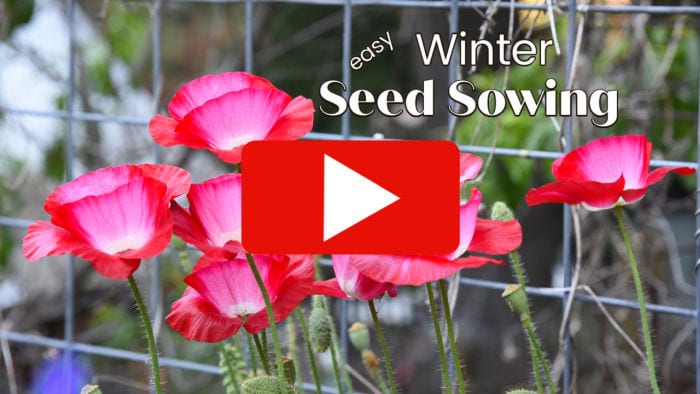
Happy winter gardening!
Enjoyed this? Please PIN and Share
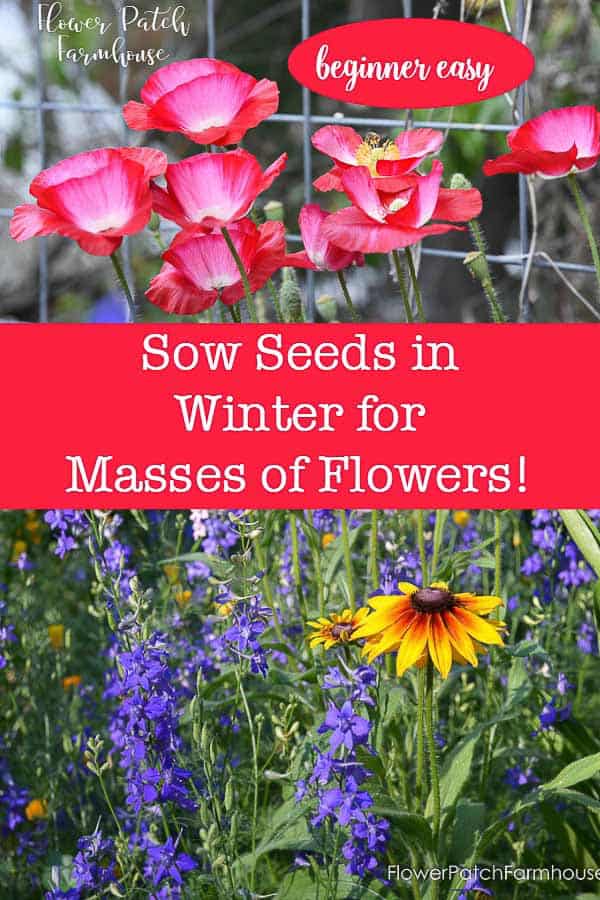


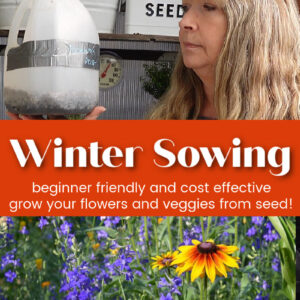


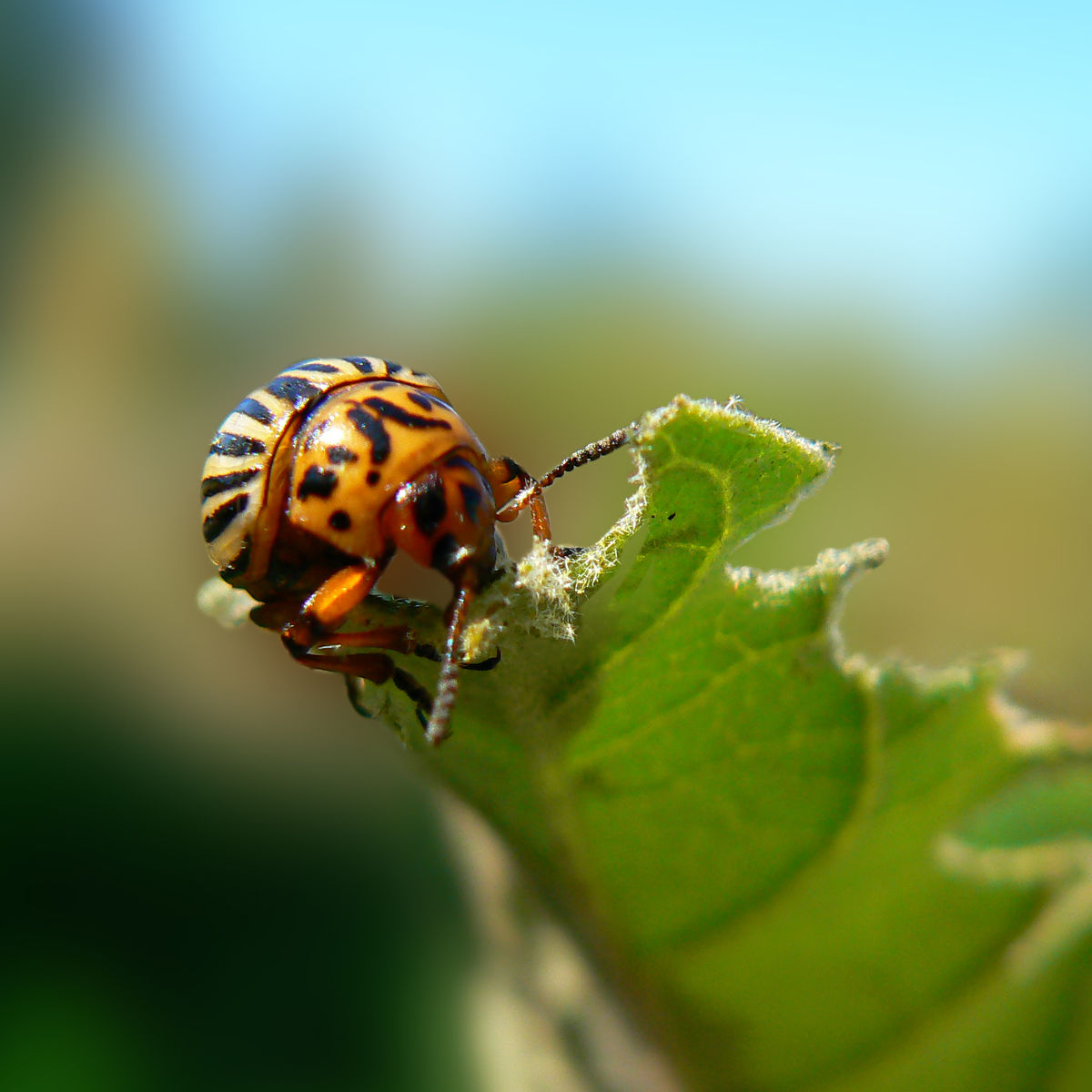
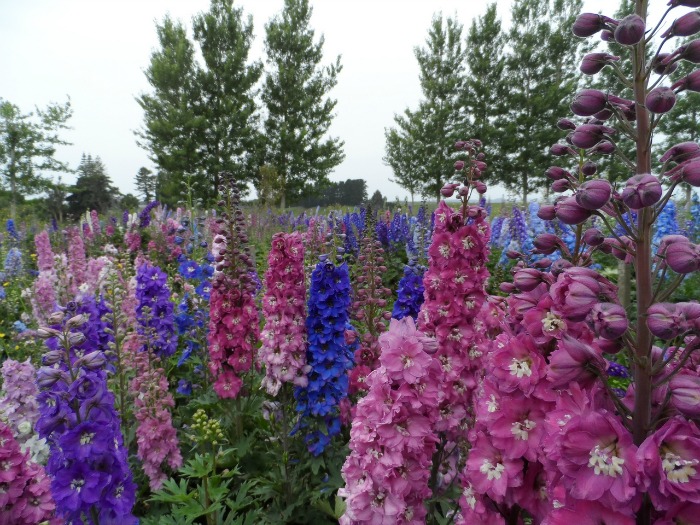
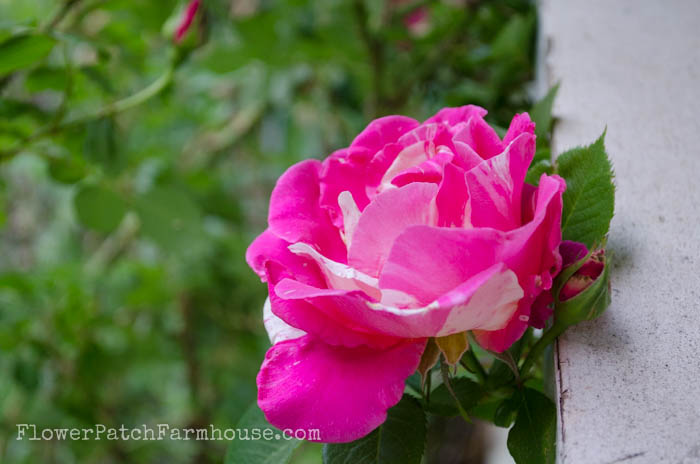
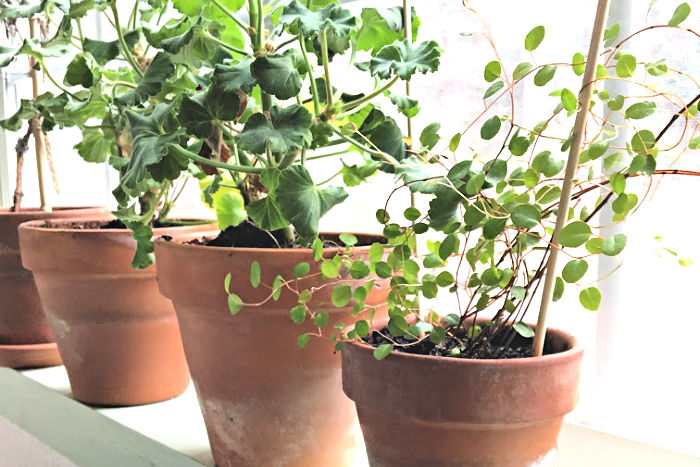
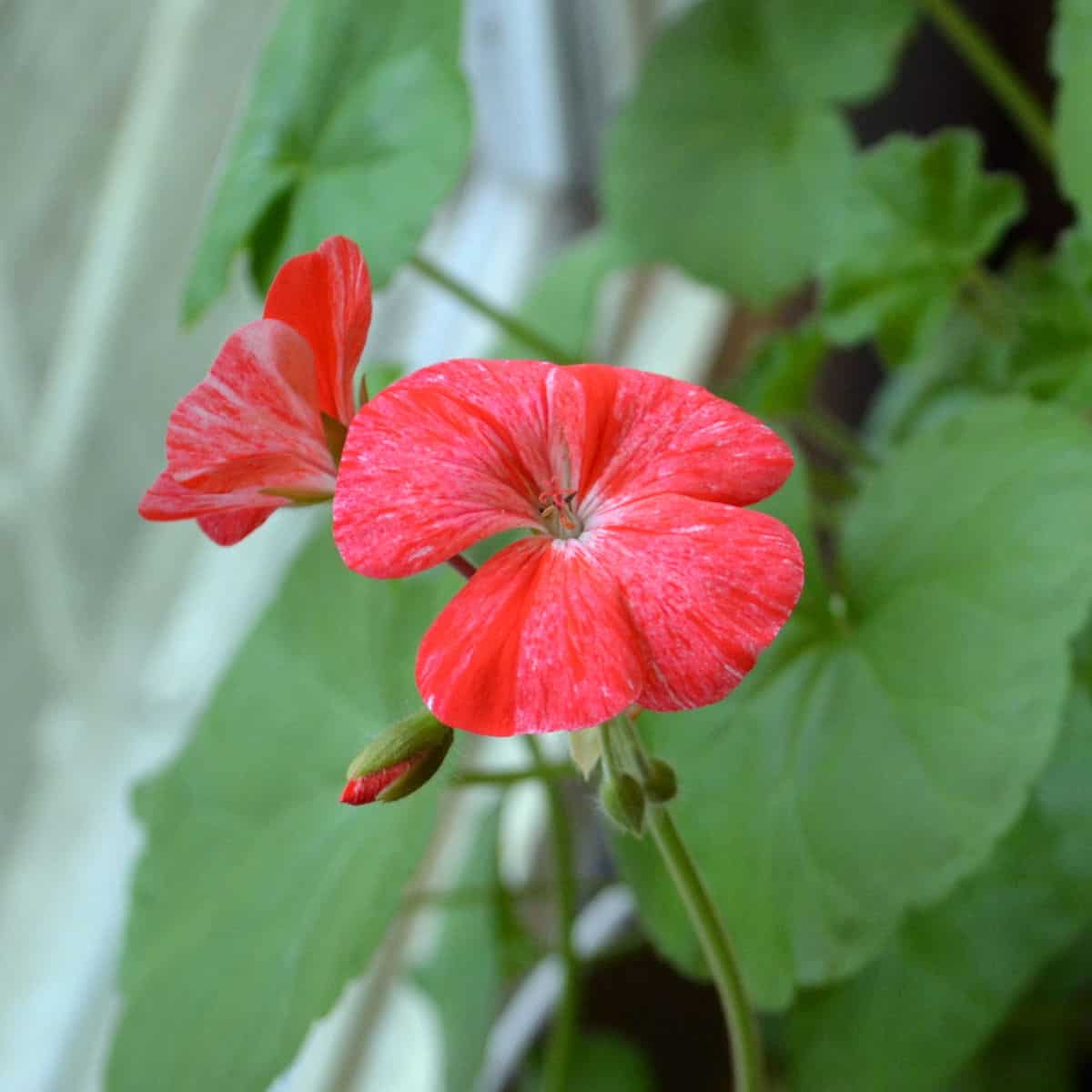
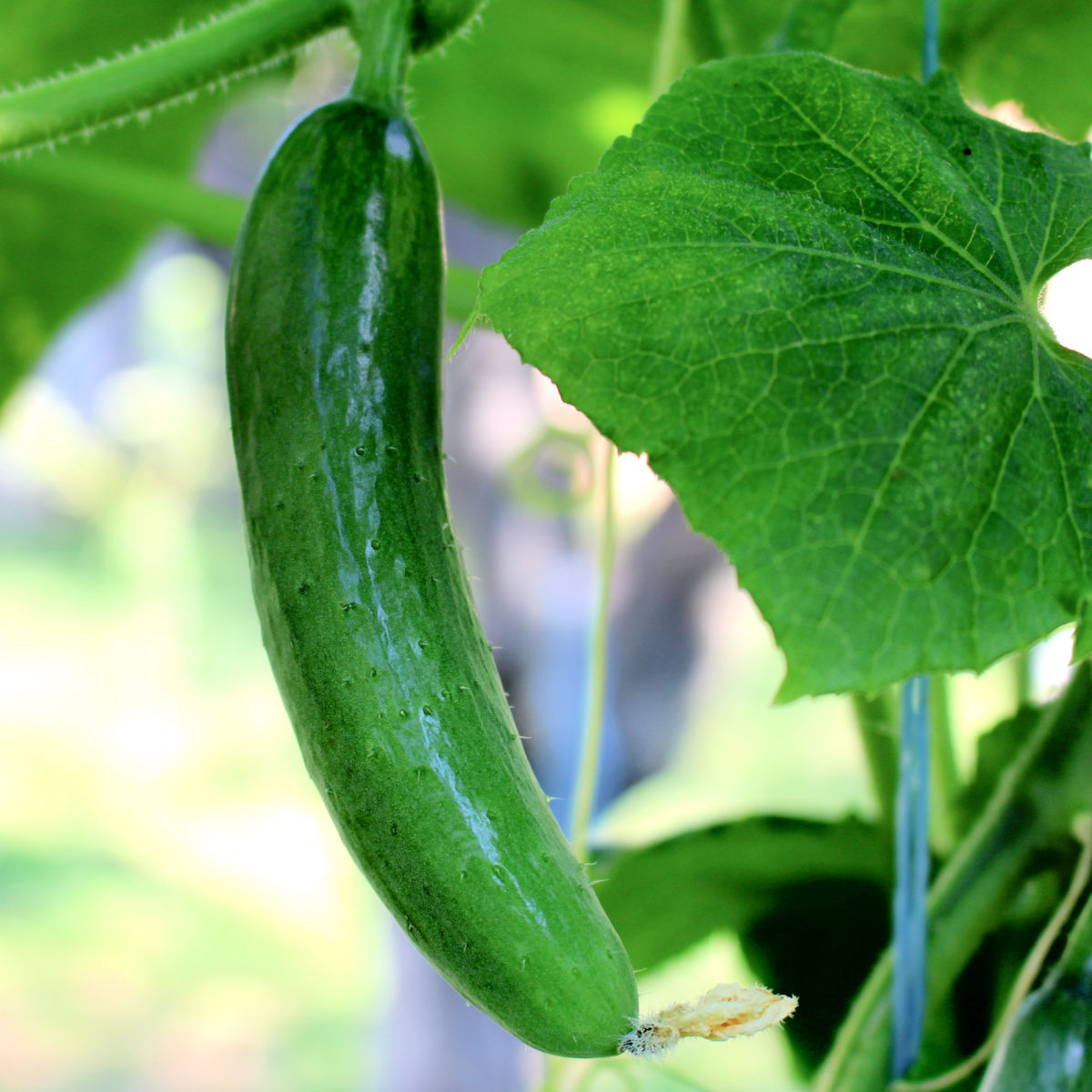
Ahh I find winter planting the best way to make it through the cold! Winter sowing always keeps me going outdoors. Great blog! I haven’t yet gotten my ducks in a row for this winter yet, but lots of time to go!
Your weather sounds very similar to ours here in western NY. We moved two years ago to a 22-acre rural woodland property (“Hummingbird Hollow”) and have more room to garden than I could have ever dreamed of. I really want to try this method this winter with milkweed, and was wondering if I can grow columbines and hollyhocks this way? I am collecting seeds from the older ones in my garden but don’t want to have to wait til the second year for the new ones to bloom. Thanks for all the great info on your site, I love learning as much as I can about gardening 😀
WONDERFUL and diverse info and I am an old hand at gardening.Thank you 😊
Wait to start tender veggies and annuals until mid-March or early April! I am working on a post about how to sow those too.
Thank you for that question, I will make sure to add a note in the post NOT to put the lids back on. The opening is needed for water and air to get in and to let excess heat out.
Maybe a foolish question but do we put the lid back on the milk jugs? Picture shows no lid. I’m excited to try this.
Have you ever tried this idea with vegetables..like peppers? That is 80% of our garden and when I start indoors they get too leggy and I loose most of them.
This is fascinating. We are gardeners and occasionally start seeds inside, but usually under a heat lamp. I love the idea of using these containers and putting them outside. Thank you for this information.
Pinning for my future reference! Anxious to get my fingers in the soil and some plants growing. Thanks!
This post inspires me to get ready for the Spring. I am so excited to get ready for gardening.
This made me want to get started. It’s raining cats and dogs but I have a few jugs, some soil, and some seeds. I can at least get a head start. Thank you.
You don’t HAVE to cold stratify to germinate echinacea but you will supposedly get a better germination rate if you do cold stratify. Late Spring for me is still cool enough. I should do a test and see.
Does echinacea need to have cold weather to germinate? I have 2 seed packets with different instructions. When I grew it 25 years s ago I just sowed it directly in the late spring.
I must confess, no I did not. But I was not the best steward of my winter sowing project either so I am not sure you should judge by how well I did. 🙂
Did you have any success with winter sowing kniphofia? I would love to try. Thank you! 🙂
I don’t, it isn’t insulated which is a bummer. I had a fabulous insulated one when we lived in Idaho, I loved it. The one I have now is not in a spot that gets any sun in the winter, we have way too many huge evergreens that surround us. But by about this time of year when the sun is higher in the sky and the nights do not drop too far I can get a start on the more tender plants, and I have some christmas rope lights I use as bottom heat which helps.
Hi from Canada.
I was wondering how you heat your greenhouse?
Yes that was it! Thanks Pamela!
Trying to till or turn the dirt when it is very wet can tend to cause it to compact and clump rather than be crumbly.
Want to get out and overturn the dirt in my yard. It’s been raining and I heard something about not overturning when wet. I can’t remember why. Can you? I do get out there after it rains to pull weeds. Makes it so much easier!
I know, I have to restrain myself at times.
Thanks, for sharing such great ideas! This is the time of year I start itching to plant.
This works especially well for the seeds that need cold stratification but many other hardy annuals and perennials respond well to this type of start too. The more tender ones I will start in April. Our last frost date is typically the third weekend in May.
We have had a few days of sun too, what a mood lifter. I am noticing the bit of added daylight too, love it! We usually get a false Spring in February where we get about two weeks of sunny skies with temps near 60 degrees. After the cold, cold days it seems like a heat wave. Then March can be cold and snowy again.
Thank you for this posting. New to me, but so is a garden. It’s been cold here in Shingletown also though the sun is out today (and yesterday). The days are getting longer which is very noticeable on the first sunny day after many gray skies. In a few days, we can kiss January goodbye 🙂
I’ve never heard of starting seeds that why. That would be for seeds that need to have the cold to germinate, right? Well, you learn something everyday! Thanks for sharing that, I’m looking forward to digging in the dirt too. I’ve been seeing Seed Packages in the Stores, so I guess there’s hope.
We get sunshine for the rest of this week and a high of 50 on Saturday. It will feel like a heat wave after the cold temps we have been getting. Next week we get more rain but I hope it will melt some of the snow piled up around my house. I don’t dare hope it will melt far enough for me to see the actual dirt. I won’t fret on it much, as long as this wet and snow stops come April. Though it can continue on through May here, which that does drive me bats. I keep telling myself we really do need this to end the 5 year drought so I don’t go stir crazy.
It’s lovely seeing you dig in the dirt again. I can’t wait for winter to turn to spring. I have a few raised beds that need planting with some continuous blooms (something I didn’t get to last year). I always used to start my veggies inside under lights but I hate fighting the deer so I go to the farmers market instead now. We’re getting snow again here today.